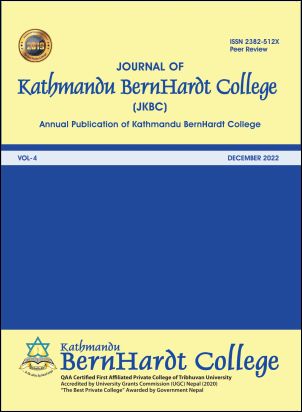Gothic Sublime in Robert Louis Stevenson’s The Strange Case of Dr. Jekyll and Mr. Hyde
DOI:
https://doi.org/10.3126/jkbc.v4i1.61438Keywords:
Gothic, Sublime, Aesthetics, Human consciousness, SubjectivityAbstract
This research work is an attempt to prove Robert Louis Stevenson’s The Strange Case of Dr. Jekyll and Mr. Hyde as a Gothic novel. It answers the question: why does the writer use the elements of Gothic in the text? Stevenson applies the Gothic to invoke the sublime thereby exploring possible plurality of human consciousness as well as the dual nature of late Victorian society. The research comes across the fact that two distinct personalities inhabit the same self. This thesis establishes Stevenson’s chosen work as an urban Gothic novella which adds new dimension to the existing research on the author’s literary works. It uses Gothic Aesthetics as theoretical tool drawing on concepts from Edmund Burke’s ‘sublime’ from his classic aesthetic philosophical discourse titled Philosophical Inquiry into the Origin of Our Ideas of the sublime and beautiful. The application of Gothic Aesthetics aids to explore Victorian Romantic horrors and reveal the real intention of the author.




